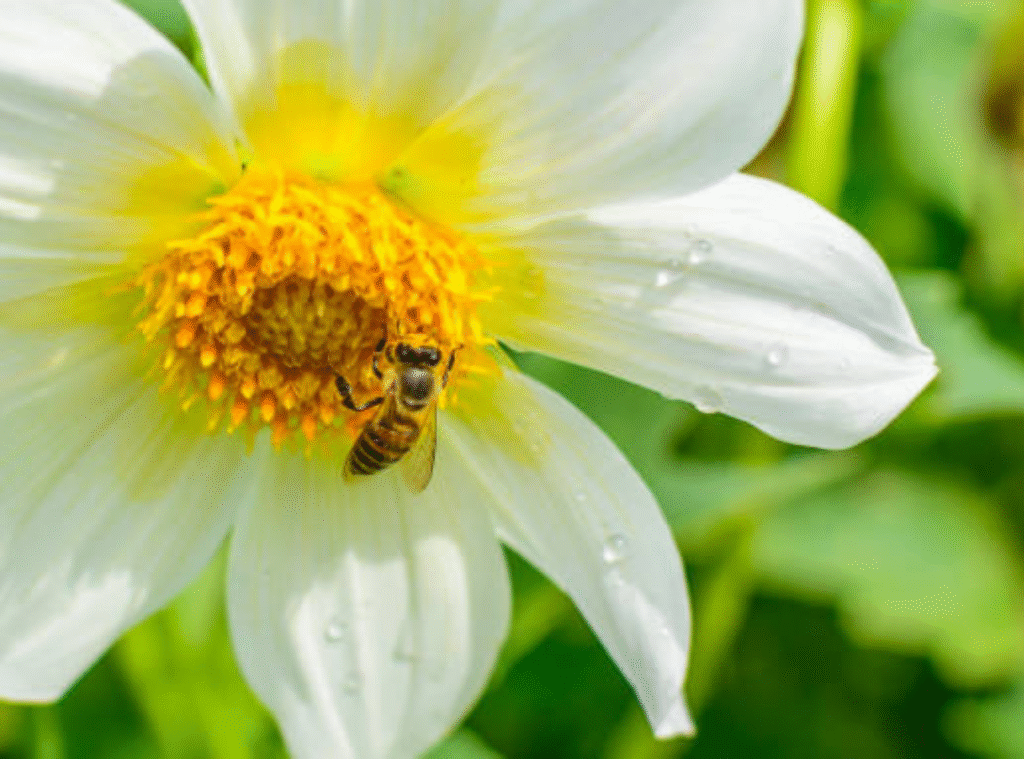Bees are among the most beneficial insects in our ecosystems, playing a crucial role in pollination. However, when they start swarming near entrances, patios, or high-traffic garden zones, they can become more of a nuisance than a help. Fortunately, you don’t have to harm these vital pollinators to find a solution. You can redirect bees naturally using strategic garden layouts that guide them to more suitable areas. This approach not only protects the bees but also enhances your landscape’s harmony. Through thoughtful plant placement and design techniques, you can create safe and thriving spaces for both humans and bees to coexist peacefully.
Understanding Bee Behavior and Movement Patterns
To redirect bees successfully, it’s essential to understand what draws them to certain parts of your yard. Bees are guided by the scent, color, and abundance of flowering plants. Their movement is intentional—drawn toward food sources, water, or potential nesting areas. Bees also follow the path of least resistance, avoiding shaded or windy areas and preferring sunny, sheltered zones where flowers bloom. When you learn to read and predict their behavior, you gain the power to gently guide them. This knowledge becomes your greatest asset in designing a garden layout that reroutes them without interference or distress.
Creating a Bee-Friendly Zone Away from Main Areas
A fundamental step in using your landscape to redirect bees involves establishing a designated pollinator zone away from high-traffic areas. This zone should be rich in nectar-heavy plants like lavender, bee balm, and black-eyed Susans. Bees are highly scent-driven, and a concentrated flower patch will act like a magnet. Position this zone at the far end of your garden or near a fence line where bees can forage peacefully. To strengthen the diversion, avoid planting highly fragrant flowers near patios, windows, or entrances. By creating this visual and olfactory contrast, bees will naturally gravitate toward the safer, bee-intended space.
Use of Structural Barriers and Pathways to Influence Movement
One of the most overlooked ways to redirect bees is through physical structures. Fences, hedges, trellises, and tall shrubs can influence the flow of bees just as they do with wind. When placed strategically, these elements form natural corridors that guide pollinators in specific directions. Consider using dense plants like arborvitae or evergreen hedgerows to subtly discourage bees from veering into lounging areas. For instance, if bees usually travel from a wildflower patch across a deck, a well-placed hedge or vine-covered pergola can act as a visual cue, rerouting their flight path toward a different section of the yard.
Additionally, paths and garden edging help define the layout of your outdoor space. Stone walkways, gravel paths, or wooden borders around bee-attracting zones can help you both separate and guide wildlife movement. The goal is to steer bees where they’re welcome while deterring them from spaces that humans frequent more often.
Water Sources Can Help Redirect Bees Naturally
Water plays an important role in managing bee activity. Bees seek water to regulate hive temperature and to dilute stored honey. By placing a shallow water source—such as a birdbath with floating corks or pebbles—closer to your designated pollinator area, you’ll attract bees there more consistently. Just as a flower bed pulls them in with fragrance, a nearby water supply will hold their attention longer, reinforcing their presence in the desired zone.
This is especially helpful if you’re working with a small yard and want to redirect bees away from play areas or seating spaces. Try to place water sources in the same vicinity as your flowering plants for maximum effect. Be sure to keep it filled and clean, so bees continue returning to the spot you’ve chosen for them.
Strategic Flower Placement and Bloom Scheduling
Careful planning of flower placement and bloom times is another effective tactic to redirect bees. Choose a mix of early, mid, and late-season blooms for your pollinator zone so bees have a reason to stay in that space year-round. Use bright, colorful flowers like marigolds, cosmos, and salvia in these sections, while limiting flowering plants near doorways or garages.
In contrast, ornamental grasses, succulents, and other non-flowering plants can fill areas where you want to reduce bee interest. These plants contribute to your landscape’s aesthetic without encouraging foraging behavior. This not only enhances your garden visually but subtly signals to bees where they’ll find what they’re looking for.
If you’re managing a property in Tennessee and still experiencing high levels of bee activity around unsafe or inconvenient locations, you might consider contacting a local bee removal company in Nashville. These experts specialize in humane and eco-friendly bee redirection, helping you maintain a thriving garden without unwanted bee interference near your home.
Incorporating Vertical Space to Help Redirect Bees
Another creative strategy to redirect bees is by utilizing vertical space. Vining plants like honeysuckle or clematis can be trained up trellises or pergolas away from footpaths and entrances. By elevating high-attraction plants, you keep bee activity up and away from areas where people gather. Hanging planters with nectar-rich blooms can also work to draw bees vertically instead of horizontally across living spaces.
This technique not only benefits bee management but adds depth and dynamic height to your garden. Layered planting with vertical components allows you to control the spatial flow of pollinators, influencing both their flight path and foraging location. Think of it like air-traffic control for your backyard.
Native Plant Use as a Long-Term Redirection Solution
Native plants are among the most effective tools when looking to redirect bees long term. Since local bees are naturally drawn to flora native to their region, integrating these into your pollinator zone reinforces that area as their main attraction. Native wildflowers and shrubs tend to be more drought-tolerant and disease-resistant, making them a sustainable addition.
By designing a native plant corridor at the edge of your property, you create a natural draw away from human spaces. Pair this with intentional plant gaps—spaces with little to no blooming species—closer to your home to further encourage bees to bypass those areas. The contrast will do much of the redirection work for you.
Redirecting Bees in Urban or Small-Space Gardens
Even in small backyards or urban patios, it’s possible to redirect bees effectively. Container gardening lets you place bee-attracting plants precisely where you want them. Concentrate these containers in corners or balcony edges, while filling closer areas with non-flowering decor or herbs less attractive to bees, like rosemary or mint.
In cities, rooftop gardens can become excellent pollinator zones. Bees can navigate vertical distances easily, so they’ll happily visit elevated gardens if given the right cues. Water features, bright planters, and clusters of native flowers make even compact spaces bee-friendly while keeping buzzing activity out of shared recreational areas.
Final Thoughts on Redirecting Bees with Garden Design
Designing a garden to redirect bees is an artful and humane way to coexist with nature’s most vital pollinators. By intentionally placing flowers, structures, water features, and visual barriers, you can guide bees to safe areas where they can thrive without posing a nuisance. Whether you’re working with a sprawling suburban yard or a tight city balcony, a thoughtful layout can transform your outdoor space into a haven for both humans and pollinators. With the right approach, your landscape can flourish beautifully and naturally guide bees to where they’re needed most.












































